by Tony Wikrent
Economics Action Group, North Carolina Democratic Party Progressive Caucus
The most uplifting story, I think, is at the end: 3 philosophers set up a booth on a street corner – here’s what people asked.
Plummeting insect numbers ‘threaten collapse of nature’
[Global Handelsblatt, via Naked Capitalism 2-15-19]
“A record 1.7 million people in the southern state signed the petition, called ‘Save the Bees,’ in just two weeks. The organizers, the Ecological Democratic Party, or ÖDP, comfortably beat their 1-million signature target, or 10 percent of voters. Because the threshold was passed ahead of a mid-week deadline, the state’s conservative government is forced to act. Under Bavarian state law, the ruling coalition, led by the right-wing Christian Social Union, must put forward a cross-party bill and organize a referendum in the next six months…. The four-page document calls for detailed amendments to Bavaria’s nature protection laws and for fundamental changes to farming practices in the state. One such amendment demands an increase in the share of organic farmland to 30 percent by 2030, from just 10 percent today. Non-organic farmers will be forced to reduce their use of pesticides. The petition also requires all farmers to create more diverse habitats within their agricultural holdings, to better support wildlife.”
The world is literally a greener place than it was twenty years ago, and data from NASA satellites has revealed a counterintuitive source for much of this new foliage. A new study shows that China and India—the world’s most populous countries—are leading the increase in greening on land. The effect comes mostly from ambitious tree-planting programs in China and intensive agriculture in both countries.
Ranga Myneni of Boston University and colleagues first detected the greening phenomenon in satellite data from the mid-1990s, but they did not know whether human activity was a chief cause. They then set out to track the total amount of Earth’s land area covered by vegetation and how it changed over time.
The research team found that global green leaf area has increased by 5 percent since the early 2000s, an area equivalent to all of the Amazon rainforests. At least 25 percent of that gain came in China. Overall, one-third of Earth’s vegetated lands are greening, while 5 percent are growing browner. The study was published on February 11, 2019, in the journal Nature Sustainability.
The mammoth task of making all buildings more energy efficient — yes, all, just like the Green New Deal says — hasn’t cowed the authorities in Europe. The German Energy Agency calculates that to make the country’s building stock almost carbon-neutral by 2050 about 1.4 percent of buildings a year will need to be refurbished; the current rate is about 1 percent, so the goal looks ambitious, but not unattainable.
Eight women from rural Malawi travelled to India to train as solar engineers. Now they are lighting the way for their communities, in a country where just 10% of households are powered by electricity.
....state-of-the-art artificial leaves, which hold promise in reducing carbon dioxide from the atmosphere, only work in the laboratory because they use pure, pressurized carbon dioxide from tanks. But now, researchers from the University of Illinois at Chicago have proposed a design solution that could bring artificial leaves out of the lab and into the environment. Their improved leaf, which would use carbon dioxide—a potent greenhouse gas—from the air, would be at least 10 times more efficient than natural leaves at converting carbon dioxide to fuel. Their findings are reported in the journal ACS Sustainable Chemistry & Engineering.
....According to their calculations, 360 leaves, each 1.7 meters long and 0.2 meters wide, would produce close to a half-ton of carbon monoxide per day that could be used as the basis for synthetic fuels. Three hundred and sixty of these artificial leaves covering a 500-meter square area would be able to reduce carbon dioxide levels by 10 percent in the surrounding air within 100 meters of the array in one day.
Above: An artificial, bio-inspired leaf. Carbon dioxide (red and black balls) enter the leaf as water (white and red balls) evaporates from the bottom of the leaf. An artificial photosystem (purple circle at the center of the leaf) made of a light absorber coated with catalysts converts carbon dioxide to carbon monoxide and converts water to oxygen (shown as double red balls) using sunlight. Credit: Meenesh SingReport: Vestas led global market for land-based turbines in 2018
[North American Windpower online (2/14), CleanTechnica (2/14), via North American Wind Energy Association]
Vestas was the top land-based turbine supplier in 2018, bringing to market machines totaling 10.1 gigawatts, according to Bloomberg NEF. Vestas accounted for 22% of the global market share, followed by Goldwind and General Electric.Report confirms wind energy is a heavy hitter
"Wind is the largest single source of zero-carbon power-generating capacity in the U.S." This fact and more were revealed Wednesday by the Business Council for Sustainable Energy in its 2019 edition of the Sustainable Energy in America Factbook. AWEA is a proud sponsor of the report. AWEA Deputy Director of Community and Online Engagement Anna Luke shares some of the findings in this blog post.
Developing 2,000 miles of wind, solar and natural gas along the corridor between the US and Mexico instead of a border wall would create jobs and drive economic investments, according to a white paper sent to congressional lawmakers by 27 engineers and scientists last week.
Nordex building turbine blade plant in Mexico
Nordex is planning a turbine blade plant in Matamoros, Mexico, that will likely begin production in spring 2019. The plant will create about 900 jobs and produce blades for the AW and Delta4000 series.
French Town Becomes a Focal Point in War over Water
“Vittel is a town in eastern France with hot springs and 5,000 inhabitants. The town has become a microcosm for a global conflict over the ownership of water. The water table from which Vittel’s inhabitants obtain their own drinking water is sinking dramatically. In 2017, 830,000 cubic meters (219 million gallons) disappeared. Nestlé was responsible for extracting 740,000 cubic meters of that water, which is sold in Europe, including Germany. Nestlé is the world’s largest food and beverage corporation, and water is a big business, one that spurs protests around the globe. Critics claim that Nestlé profits from the fact that some people are no longer able to access clean drinking water from their taps. Some argue the company may even be causing that shortage, only to turn around and sell its own brand of water to people in a plastic bottle.”
Barry Ritholtz, February 12, 2019 [The Big Picture]
Pentagon Fears Climate Crisis, w/ Billions in Damage to US Bases & Societal Upheaval[Agence France Presse, ,via Naked Capitalism 2-14-19].
Admiral Philip Davidson, who heads the US military’s vast Indo-Pacific Command, told lawmakers he concurred with a recent assessment from the US intelligence community that listed climate change as a global threat. “The immediate manifestation is the number of ecological disaster events that are happening,” Davidson told the Senate Armed Services Committee.
The intelligence report states: “Damage to communication, energy, and transportation infrastructure could affect low-lying military bases, inflict economic costs, and cause human displacement and loss of life.”The Tiny Swiss Company That Thinks It Can Help Stop Climate Change
“The technicians had in front of them 12 large devices, stacked in two rows of six, that resembled oversize front-loading clothes dryers. These were ‘direct air capture’ machines, which soon would begin collecting carbon dioxide from air drawn in through their central ducts. Once trapped, the CO₂ would then be siphoned into large tanks and trucked to a local Coca-Cola bottler, where it would become the fizz in a soft drink.”
[City Lab, via Naked Capitalism 2-15-19]
“[G]rid resiliency is vital for national security. The argument goes like this: the boom in subsidized wind and solar, along with the fall in natural-gas prices, is driving many coal and nuclear plants out of business. That threatens to leave the power grid largely dependent on natural gas during lulls in wind or solar power output. But gas-fired power plants rely on a steady flow of natural gas through a relatively small number of interstate pipelines. These pipelines are vulnerable to hacking and breakdowns. If hackers or technical glitches managed to knock out several pipelines at once, entire regions of the country could fall into crisis. In contrast, coal and nuclear plants are able to store fuel on-site, making them excellent backup power sources in an emergency. "What Happened When I Bought a House With Solar Panels: Third-party ownership and decades-long contracts can create real headaches
Democratic presidential candidates support Green New Deal
Most Democratic presidential candidates are pledging their support for the Green New Deal, a resolution that addresses climate change issues including a goal of net-zero greenhouse emissions in 10 years. House Speaker Nancy Pelosi, D-Calif., and former New York Mayor Michael Bloomberg have expressed more skeptical views.
How the Left Embraced Elitism
“...the Green New Deal, which is becoming the litmus test of progressive seriousness. I don’t know if it is socialism or not socialism — that’s a semantic game — but it would definitely represent the greatest centralization of power in the hands of the Washington elite in our history… The authors liken their plan to the New Deal, but the real parallel is to World War II. It is the state mobilizing as many of society’s resources as possible to wage a war on global warming and other illsWhat Brooks and other conservatives and libertarians refuse to recognize or acknowledge, is that it is the failure of private capital to adequately address the existential issues facing society that is making "centralization of power in the hands of" government a requirement if we are going to solve the climate crisis. In other words, the real culprit is capitalists butchering capital allocation, leaving us no choice but to use some other economic instrument.
‘It’s crazy. It’s loony’: Republicans giddy as Democrats champion Green New Deal
[Politico, via Naked Capitalism 2-10-19]
Republicans bashed the concept as technologically impossible, unimaginably costly and a “socialist fever dream” that they said would cost Democrats moderate seats across the country. “I think this will be a piñata that Republicans will continue to hit and use to their advantage in the 2020 elections. It’s a policy piñata,” said Ron Bonjean, a Republican strategist.A lot of Republicans claim to be christian, but obviously haven't read the owners manual. Proverbs 29:18 -- Where there is no vision, the people perish.
[The Hill, via Naked Capitalism 2-11-19]
“Trump’s warning of creeping socialism in the United States, deftly mentioned after a section of the speech on the unfolding political crisis in Venezuela, created an immediate public split among Democrats that was caught on live television. Senate Democratic Leader Charles Schumer (N.Y.) and Sens. Debbie Stabenow (Mich.), Joe Manchin (W.Va.), Jon Tester (Mont.) and Sherrod Brown (Ohio) were among the lawmakers who stood with Republicans to applaud Trump when he pledged that the United States would never slide into socialism. But other Democrats weren’t so happy about Trump’s choice of words — which was clearly meant to put them on the spot. Sen. Bernie Sanders (I-Vt.), who labels himself as a democratic socialist, stayed rooted in his seat, as did Sen. Cory Booker (D-N.J.). Freshman Rep. Alexandria Ocasio-Cortez (D-N.Y.), another leading democratic socialist, smiled in response to Trump’s remark but stayed seated.”
Economic Injustice
Why Does the Democratic Party Refuse to Address Poverty?
Susie Shannon is a warrior for the poor and homeless. An activist from Southern California, Susie recognized something in the early 2000s that millions of progressives are starting to realize now: If she wanted to make a difference and actually improve people’s lives, she not only had to engage with the Democratic Party, she had to enter it.
In doing so, Susie didn’t alter her politics one iota; rather, she was instrumental in building the Progressive Caucus of the California Democratic Party, for which she is now a presiding officer. Susie also shepherded a homeless-housing bill all the way through the California State Legislature to the governor’s desk and didn’t relent until she had Jerry Brown’s signature. In 2016 she was a Bernie Sanders delegate; and the following year she became the only elected Bernie delegate from California to become a member of the DNC.
Not wasting any time, Susie wrote a resolution prior to the Chicago DNC meeting in August 2018 to form an official Poverty Council of the DNC....
Shortly after submitting the resolution, Susie was contacted by DNC staff members who rejected the proposal for a Poverty Council and altered the resolution to make it a toothless reaffirmation of the Democratic Party’s commitment to poverty issues, with no establishment of a Poverty Council.
As the author of the resolution and a member of the DNC, Susie had a right to reject a recommendation from the staff. She told them on the phone that the changes were unacceptable and she would not agree to a simple reaffirmation. Despite her rejecting their changes, the staff sent out their version in the first meeting notice sent to the DNC members....
the question must be asked, why does the DNC (and, by extension, the establishment wing of the Democratic Party) refuse not only to address poverty but really even to acknowledge its existence? Are they frightened that the Poverty Council will make morally compelling claims that are not a part of their “electoral strategy”? Are they afraid that the council will make proposals, such as a right to housing or a guaranteed income, that would be met with disapproval by Wall Street backers who insist upon balanced budgets? Whatever the reason may be, doesn’t their fear of addressing poverty mean that they are tacitly accepting mass poverty as a constant in American society?
....What is new is that following the miraculous success of the 2016 Sanders campaign, and the election in 2018 of truly radical voices like Alexandria Ocasio-Cortez and Rashida Tlaib to Congress, left progressives are engaging with and entering the Democratic Party like no time in recent memory. The emergence of a powerful social-democratic tendency inside the party means that the party’s reluctance to seriously address poverty is going to be challenged.
This is a difficult battle that progressives simply have to win. Given the current realities of the American political system, if the Democratic Party is unwilling to tackle endemic poverty, there’s no available avenue to address this reality of American society and we truly are condemning millions upon millions of people to misery.
Wealth concentration returning to ‘levels last seen during the Roaring Twenties,’ according to new research
[Graph below from The Big Picture 2-15-19]
Citigroup Pats Itself on the Back for Disclosing It Pays Women 29 Percent Less than Men
[Wall Street On Parade 2-13-19]
Will Growers’ Demand for Wage Cuts Get Help From U.S. Government?
“The Department of Labor’s National Agricultural Workers Survey, the best analysis of farm worker demographics for over two decades, says there are about 2.5 million farm workers in the U.S., with about three-quarters of them born outside the U.S., and half undocumented. Last year growers were certified to bring in 242,762 H-2A workers – a tenth of the total workforce and a rapidly rising number. Holding down their wages would save growers a lot of money. Farmworker Justice, a Washington, D.C.-based advocacy coalition, says the average annual income for farm worker families is between $17,500 and $19,999. A quarter of all farm worker families earn below the federal poverty line of $19,790, the coalition says.”We are all peasants now: The student-loan crisis is destroying the middle class
”The confidence people have in the area’s public schools is one effect of a law passed back in the 1970s called the ‘Fiscal Disparities Act’… The Minnesota state legislature passed a law requiring all of the region’s local governments—in Minneapolis and St. Paul and throughout their ring of suburbs—to contribute almost half of the growth in their commercial tax revenues to a regional pool, from which the money would be distributed to tax-poor areas. Today, business taxes are used to enrich some of the region’s poorest communities.”How Wall Street Bought Up America’s Homes
In honor of the Bank of North Dakota’s centennial anniversary, here is an excellent academic report from Cornell University that includes a detailed case study of BND’s 2015 Infrastructure Loan Fund. The report examines the “unique benefits of public banks and explores strategies for the implementation of similar structured institutions in New York State and the broader US context.” Prepared by Shareef M. Hussam for Professor Mildred Warner at Cornell’s Department of City and Regional Planning, it provides strong academic reinforcement for advocates’ testimony, concluding:
“The public banking model offers several lessons for governmental entities seeking to affordably and sustainably finance infrastructure. First, funds for infrastructure investment should not be separated by sector, but rather commingled to enable cross-subsidization. Second, by pooling municipal capital and resources into an umbrella institution, local governments could access cheaper financing and improve their ability to compete for federal and state grants. Third, the institution should have profit motive, market discipline, political independence, and good governance. Through implementation of these strategies, it may be possible to sustainably finance critical infrastructure through public banking.”
The CA Labor Commissioner has fined a construction contractor $12 million for wage theft and other violations committed over 3 years against 1,000 workers. Rather than just back pay and fines, bosses who steal from their employees on this scale should be locked up.
Abolish Billionaires
“A billion dollars is wildly more than anyone needs, even accounting for life’s most excessive lavishes. It’s far more than anyone might reasonably claim to deserve, however much he believes he has contributed to society. At some level of extreme wealth, money inevitably corrupts. On the left and the right, it buys political power, it silences dissent, it serves primarily to perpetuate ever-greater wealth, often unrelated to any reciprocal social good. For [Tom Scocca — a longtime writer at Gawker], that level is self-evidently somewhere around one billion dollars; beyond that, you’re irredeemable….. if we tolerate the supposedly “good” billionaires in politics, we inevitably leave open the door for the bad ones. And the bad ones will overrun us. When American capitalism sends us its billionaires, it’s not sending its best. It’s sending us people who have lots of problems, and they’re bringing those problems with them.”
For Democrats Aiming Taxes at the Superrich, ‘the Moment Belongs to the Bold’
[NYT, via Naked Capitalism 2-10-19]
More Americans Are At Least 3 Months Behind On Their Car Payment Than Ever Before
“A record 7 million Americans are 90 days or more behind on their auto loan payments, the Federal Reserve Bank of New York reported Tuesday, even more than during the wake of the financial crisis….. A car loan is typically the first payment people make because a vehicle is critical to getting to work, and someone can live in a car if all else fails. When car loan delinquencies rise, it is usually a sign of significant duress among low-income and working-class Americans.”Auto Delinquency Rates Feed the Debt Trolls
February 14, 2019 [The Big Picture]
Rights of ‘gilets jaunes’ protesters in France, ‘disproportionately curtailed’, say UN independent experts
Medical Bankruptcy: Still Common Despite the Affordable Care Act
From the associated press release: “Medical problems contributed to 66.5% of all bankruptcies, a figure that is virtually unchanged since before the passage of the Affordable Care Act (ACA), according to a study published yesterday as an editorial in the American Journal of Public Health. The findings indicate that 530,000 families suffer bankruptcies each year that are linked to illness or medical bills…, The responses also did not differ depending on whether the respondent resided in a state that had accepted ACA’s Medicaid expansion.” n = 910. More: “The researchers noted that bankruptcy is most common among middle-class Americans, who have faced increasing copayments and deductibles in recent years despite the ACA. The poor, who were most helped by the ACA, less frequently seek formal bankruptcy relief because they have few assets (such as a home) to protect and face particular difficulty in securing the legal help needed to navigate formal bankruptcy proceedings.”
The Only Guide to ‘Medicare for All’ That You Will Ever Need
“A strong series of budgetary tools lets Jayapal’s single-payer program keep providers on a tight leash. One tool is global budgeting, or the advance determination of the national healthcare budget, which is used to set baseline budget agreements for the year and pay hospitals in guaranteed blanket sums based on expected activity. By saying, “last year you spent $2 million dollars, and we can pretty reasonably predict that this year you’ll need $2.1 million dollars for all your services,” the single payer can pay hospitals fairly while minimizing the hospital’s ability to rack up line items and gouge the government. Further tools include prohibitions on providers using single-payer payments for profit, union-busting, marketing, or federal campaign contributions. A single payer cannot remove profit from healthcare on its own (nor could an American NHS), but at least we can give it the muscle to spar with its worst monsters on equal footing.”
Why Is Medicine So Expensive?
Daniel J. Kevles [New York Review of Books 2-10-19]
The system of prescription drug pricing, largely unplanned, is a patchwork product of history, vulnerable to manipulation by the pharmaceutical industry.
Today in 1922, researchers at the University of Toronto announced the discovery of insulin. They sold the patent for $1 so it would be available to all.
97 years later, Eli Lilly is charging ~$300 and Americans die because they can’t afford their medication. Outrageous.
Americans Cross Border Into Mexico To Buy Insulin At A Fraction Of U.S. Cost
“On one trip to the pharmacy last year, Fenner was told that a three-month supply of insulin would cost her $3,700. That same supply would cost only about $600 in Mexico. The U.S. government estimates that close to 1 million people in California alone cross to Mexico annually for health care, including to buy prescription drugs. And between 150,000 and 320,000 Americans list health care as a reason for traveling abroad each year. Cost savings is the most commonly cited reason."How healthy is your state?
Barry Ritholtz, February 10, 2019 [The Big Picture]
HP’s ink DRM instructs your printer to ignore the ink in your cartridge when you cancel your subscription
83% Of Consumers Believe Personalized Ads Are Morally Wrong, Survey Says
“this week’s Wells Fargo outage — the San Francisco bank’s second failure this month — caused some to ask whether the banking systems we depend on are too fragile. Starting Thursday and lasting through Friday morning, ATMs failed to show balances and transactions, web log-ons were rejected, and smartphone apps displayed errors. The bank ultimately blamed smoke in a data center.” • Smoke in a data center? Huh
“The Federal Communications Commission, the government body charged with overseeing internet connectivity, among other things, uses data that is self-reported by the internet service providers… ISPs have to report whether a census block — an imprecise geographic area that ranges from a tenth of a mile to 8,500 miles and can contain anywhere from zero to 600 people — has access to “advertised” broadband download speeds of at least 25 megabits per second, the minimum requirement to be considered broadband…. A whole census block is considered “served” if broadband service is available anywhere within it. So even if it’s impossible to get internet in your home or business, your area could be marked off as having 100 percent availability because someone hundreds of miles away is connected… In essence, the government data is measuring areas in which an internet connection could exist rather than where it is…. Broadband usage data from Microsoft — which was released late last year and is based on anonymous data the company collected on how fast its products were actually being used and updated — paints a much bleaker picture. It shows that most counties in America are without high levels of broadband usage.” • Unlike, say, First World countries like South Korea. Here’s a handy map:
“[A]utonomous vehicles have three choices when it comes to what to do between rides: park, go home, or circle aimlessly to kill time. ‘In practice, the decisions by AVs regarding parking location and where to park or cruise are likely to be economically driven,’ the paper says. And the cheapest option is likely to be cruising for more than 40% of trips, [said Adam Millard-Ball, University of California, Santa Cruz environmental studies professor].’
“According to its latest annual report, Amazon now has 288 million square feet of warehouses, offices, retail stores, and data centers. In 2017—the biggest growth year for the company’s properties—alone, it added more square feet of building (74.6 million) than the company had total in 2012 (73.1 million), when it was already the largest online retailer in the world. Amazon has added more building space from 2016 to 2018 than it did in all the rest of its history. Go back a little further in time, and the growth is even more astounding: Amazon has 48 times the square footage it did in 2004… This is not due to the growth of Amazon Web Services (the company’s data-center business), or the acquisition of Whole Foods. All of its retail locations add up to less than 20 million square feet; the whole Amazon Web Services business occupies only 10 million square feet. Amazon’s recent growth has been in the service of logistics, the work of getting stuff you order on the internet to your home or business… At a site visit I took with one of Amazon’s major warehouse developers—Prologis—one employee pointed at a huge building under construction and noted a crucial change in the American economy: ‘People don’t realize this is where the future is,’ he said. ‘No one’s going to shopping malls. Shopping malls are going into here, right?'”Amazon Will Pay $0 in Federal Taxes on $11.2 Billion Profits
Amazon Ring Teaming Up With Police in War on ‘Dirtbag Criminals'”
“But Ring stands alone as a tech company for which hyperconnected vigilance isn’t just a byproduct, but the product itself — an avowed attempt to merge 24/7 video, ubiquitous computer sensors, and facial recognition, and deliver it to local police on a platter. It’s no surprise then that police departments from Bradenton, Florida, to Los Angeles have leapt to “partner” with Ring. Research showing that Ring’s claims of criminal deterrence are at the very least overblown don’t seem to have hampered sales or police enthusiasm for such partnerships….. A Ring video that appears to have been produced for police reveals that the company has gone out of its way to build a bespoke portal for law enforcement officers who want access to the enormous volume of residential surveillance footage generated by customers’ cameras.” • Ugh. And this, OMG: “Ring cameras are designed and sold to be placed not only outside you front door or garage, but inside your home too. ”
“Uber and Lyft have developed powerful services that delight their users and are transforming urban transportation. But if they hadn’t been given virtually unlimited capital to offer rides at subsidized prices taxicabs couldn’t match in order to grow their user base at blitzscaling speed, would they be offering their service for less than it actually costs to deliver? Would each company be spending 55% of net revenue on driver incentives, passenger discounts, sales, and marketing to acquire passengers and drivers faster than the other? Would these companies now be profitable instead of hemorrhaging billions of dollars a year? Would incumbent transportation companies have had more time to catch up, leading to a more competitive market? Might drivers have gotten a bigger share of the pie? Would a market that grew more organically—like the web, e-commerce, smartphones, or mobile mapping services—have created more value over the long term?”
Hidden Loophole in Corporate Tax Reform Law, Revealed
Barry Ritholtz, February 13, 2019 [The Big Picture]
The Global Con Hidden in Trump’s Tax Reform Law, Revealed
Brad Stetser [New York Times, via The Big Picture 2-13-19]
Where American Profits Hide: Seven low-tax nations, some with relatively tiny economies, generate an increasingly greater share of U.S. corporate profits than do the major economies shown here, thanks to complex accounting arrangements. [A MUST-SEE graph]
What happens when Walmart shutters a store?
3 years later in this small town, the downtown still has a ways to go, but there’s a new grocery store, other shops have opened, sales at the local pharmacy have doubled, and the hardware store is up 20%. pbs.org/newshour/show/…
“Boeing has gushed cash quarter after quarter for more than four years, sending its share price soaring yet leaving some analysts suspicious about how Boeing manages always to surpass Wall Street’s cash flow expectations…. The tricks it uses are mundane in procedure, but huge in scale. They amount to various ways of pulling forward cash receipts from airline customers — bringing in cash that’s due in the future just ahead of the end of the quarter — or pushing out the payment of accounts to suppliers into the next quarter. While many companies can massage their cash-flow results, few have as much leeway to do so as Boeing. That’s because aircraft purchases involve such large sums, on payment schedules that are negotiable and adjustable. And the process is entirely opaque from the outside because the precise financial terms of jet sales are never disclosed. Past reports from financial analysts point to very large amounts of cash involved.”
Pam Martens, February 14, 2019 [Wall Street on Parade]
JPMorgan Chase is a Wall Street bank that has pleaded guilty to three felony counts in the past five years and lost at least $6.2 billion of its depositors’ money trading high-risk derivatives in London....
The serially fined and investigated bank, as of yesterday’s close, has a market value of $342.817 billion which is $110.8 billion more than Boeing – one of the most sophisticated engineering companies in the world, producing commercial jet airplanes, military aircraft, rockets and satellites for customers around the globe.
Looking at the bizarre situation with a wider lens, if you add up the market cap at yesterday’s market close of General Motors ($54.97 billion), GE ($90.199 billion), Ford ($33.454) and IBM ($124.977 billion), there’s still $39 billion left over before you reach JPMorgan Chase’s market cap. A commercial bank is not supposed to be more valuable than the industrial backbone of the country. It’s not supposed to be more profitable than the backbone either. And yet, somehow, JPMorgan’s net income for 2018 was $32.5 billion, more than three times that of Boeing.
Another way to look at this market distortion is that JPMorgan Chase is little more than a utility company – existing primarily to offer a public good like making prudent loans to sound businesses in order to create good-paying American jobs through business innovation, keep the nation globally competitive, and U.S. industry and the economy humming along.
All of a Sudden, Fixing American Capitalism Is on Everybody’s Mind
Pam Martens: February 11, 2019 [Wall Street on Parade]
The key idea behind the new book, Citizen Capitalism, is the following: The creation of a Universal Fund, which would be similar to a mutual fund with a few key differences. Each U.S. citizen, age 18 or older, would receive one share in the fund. The fund would acquire a portfolio of stocks in different corporations through donations from the corporations and wealthy individuals. The citizens would receive the cash from the dividends throughout their lifetime but would not be able to sell or trade their shares. When the citizen dies, their share would return to the fund. The Universal Fund would not be allowed to trade its shares so it would have no interest in seeking short-term profits. The Universal Fund would use a nonprofit proxy advisor to vote its shares, reflecting the will of its citizen shareholders.
Jens Flottau, February 13, 2019 [Aviation Daily, via Aviation Week and Space Technology]
After years in crisis mode, the decision to stop production of the world’s largest civil aircraft does not come as a surprise. But having to cancel the multi-billion project little over 18 years after it was launched in December 2000 shows how much Airbus was off in its demand forecast for very large aircraft. Instead of the around 1,500 orders for aircraft in the category that Airbus expected over 20 years, only a fraction materialized.
Governance
Police Are Outsourcing Policy To A Secretive Private Company
“Lexipol [is] a California-based company that says it provides policies for approximately 3,400 police, fire, and correctional agencies in 35 states. It has grown rapidly over the last 15 years and saturated California, where its clients include more than 90 percent of law enforcement agencies. It’s impossible to know just how far Lexipol’s reach has spread as the company declines to provide a list of clients, saying that it is proprietary information. But according to an analysis published last year in the Texas Law Review, ‘although there are other private, nonprofit, and government entities that draft police policies, Lexipol is now a dominant force in police policymaking across the country.’ As a result, a large portion of American police policy is now being drafted by a little-known private company with no public oversight.”Leaked Wikileaks Doc Reveals US Military Use of IMF, World Bank as “Unconventional” Weapons
[Mint Press News, via Naked Capitalism 2-11-19]
February 13, 2019 [Eno Foundation, via Railway Age]
Worst Practice #1: Legally defining project parameters in ways that can never be changed. In 2008, California voters approved Proposition 1A, which enacted a new law authorizing construction of the high-speed rail system and authorizing the issuance of $9 billion in bonds to fund planning, design and construction. However, the law enacted by Prop 1A (text here) was exceedingly detailed, and prescribed the route, minimum speed between each set of major destinations, number of stations, headway times and other metrics. And in California, laws enacted by ballot initiative can never be amended by the state legislature without going back to voters (see Article II, section 10 of their constitution). This meant that the project could not evolve to fit budgetary and other realistic constraints without inviting lawsuits based on the text of Prop 1A, which the State Auditor saidcaused many of the construction delays. It is uncertain if California can ever construct a system that meets the terms of Prop 1A, which includes a requirement that the finished system “will not require a local, state or federal operating subsidy.”
Eugene V. Debs and the Endurance of Socialism
[New Yorker, via Naked Capitalism 2-14-19]Biographical profile of Debs
AOC: Can you be a democratic socialist and a capitalist? ‘It’s possible'”
[MSNBC, via Naked Capitalism 2-12-19]
Supreme Court’s ‘10th justice’ favors unusual tactic for Trump cases
“Lee J. Carter, a Virginia state lawmaker with enough proverbial skeletons to crowd a graveyard, has taken it upon himself to beat any potential rival to the punch. In a whiplash-inducing confessional on Twitter, Carter, a Democratic delegate from Prince William County [and the General Assembly’s only self-proclaimed socialist[, recently told his 18,000 followers he needed to share details of his past before unidentified foes ‘try personal smears.'” • And it worked!So you are a Democratic precinct captain in Virginia, now what?
[Real News Network 2-12-19]
When you live in the rural South, your story rarely makes the news, but Southern activists are shaking things up, with their votes, and their broadband transmitter too. This week, Ash-Lee Woodard Henderson and Rev. Allyn Maxfield-Steele the co-directors of the revered civil rights school, the Highlander Center, talk about blue waves, black women and…How to Evaluate a US Presidential Candidate
[Benjamin Studebaker, via Naked Capitalism 2-11-19]
“How can we tell the candidates who mean business apart from the candidates who are trying to trick progressive voters? There are four big things I look at:”
- What is this candidate’s history? What does this candidate actually do with power, when they have it?
- Who has given this candidate money? Who does this candidate rely on to run their campaign? Who can they not afford to alienate?
- What is this candidate’s attitude to institutions? If this candidate meets resistance within the Democratic Party, will this candidate capitulate or fight to change the party?
“Run those four tests. History, Money, Institutions, Seriousness.”
- Is this a serious candidate? Does polling and/or favorability data suggest they could really win, or are they running to promote themselves?
Made me sad
How NASA’s Opportunity Mars Rover Lived So Long
Long-running efforts to re-establish communications with NASA’s intrepid Opportunity rover on Mars have come to a close.
The long winding road ...
....
Mark Carreau, February 13, 2019 [Aerospace Daily & Defense Report, via Aviation Week and Space Technology]
Opportunity’s long life also permitted dozens of young engineers to join the effort, many of them leveraging the experience to moving on to other planetary science missions, according to John Callas, the NASA project manager for both Spirit and Opportunity. Habitable rovers will likely extend the reach of the first human Martian explorers.
Launched July 7, 2003, Opportunity bounded onto the surface of Mars cushioned by airbags on Jan. 25, 2004. That was three weeks after its identical twin, Spirit, launched on June 10, 2003, paved the way. Their missions, half a world away from one another, were expected to last no more than 90 days, with the rovers traveling just more than a half mile each. Equipped with cameras, spectrometers, robot arm and grinding tools, they represented a combined $800 million investment at the time.
Spirit trekked nearly 5 mi. from its Gusev Crater landing site, a possible one-time lake, to the Columbia Hills. It explored soil and rock that indicated Mars had been impacted by other celestial objects and hosted explosive volcanism over time, as well as subsurface water, according to Steve Squyres of Cornell University, who served as the principal investigator for the two rovers.
Made me smile
3 philosophers set up a booth on a street corner – here’s what people asked
...a booth underneath a banner that read “Ask a Philosopher” – at the entrance to the New York City subway at 57th and 8th... was part of the latest public outreach effort by the American Philosophical Association, which was having its annual January meeting up the street....
And then I spotted her … an interlocutor who would be my toughest questioner of the day. She was about 6 years old and clutched her mother’s hand as she craned her neck to stare at us. Her mother stopped, but the girl hesitated. “It’s OK,” I offered. “Do you have a philosophical question?” The girl smiled at her mother, then let go of her hand to walk over to the booth. She looked me dead in the eye and said: “How do I know I’m real?”


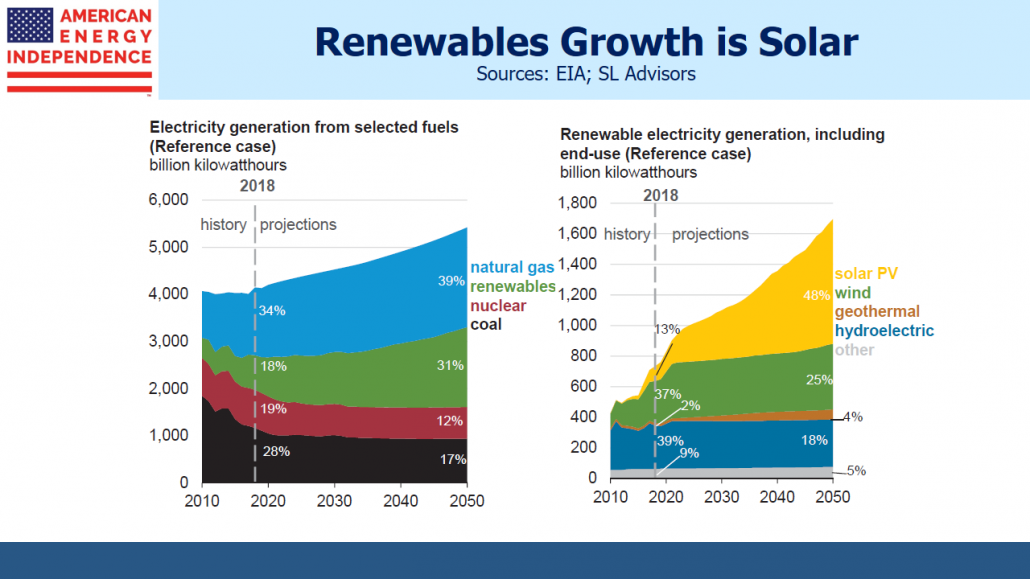
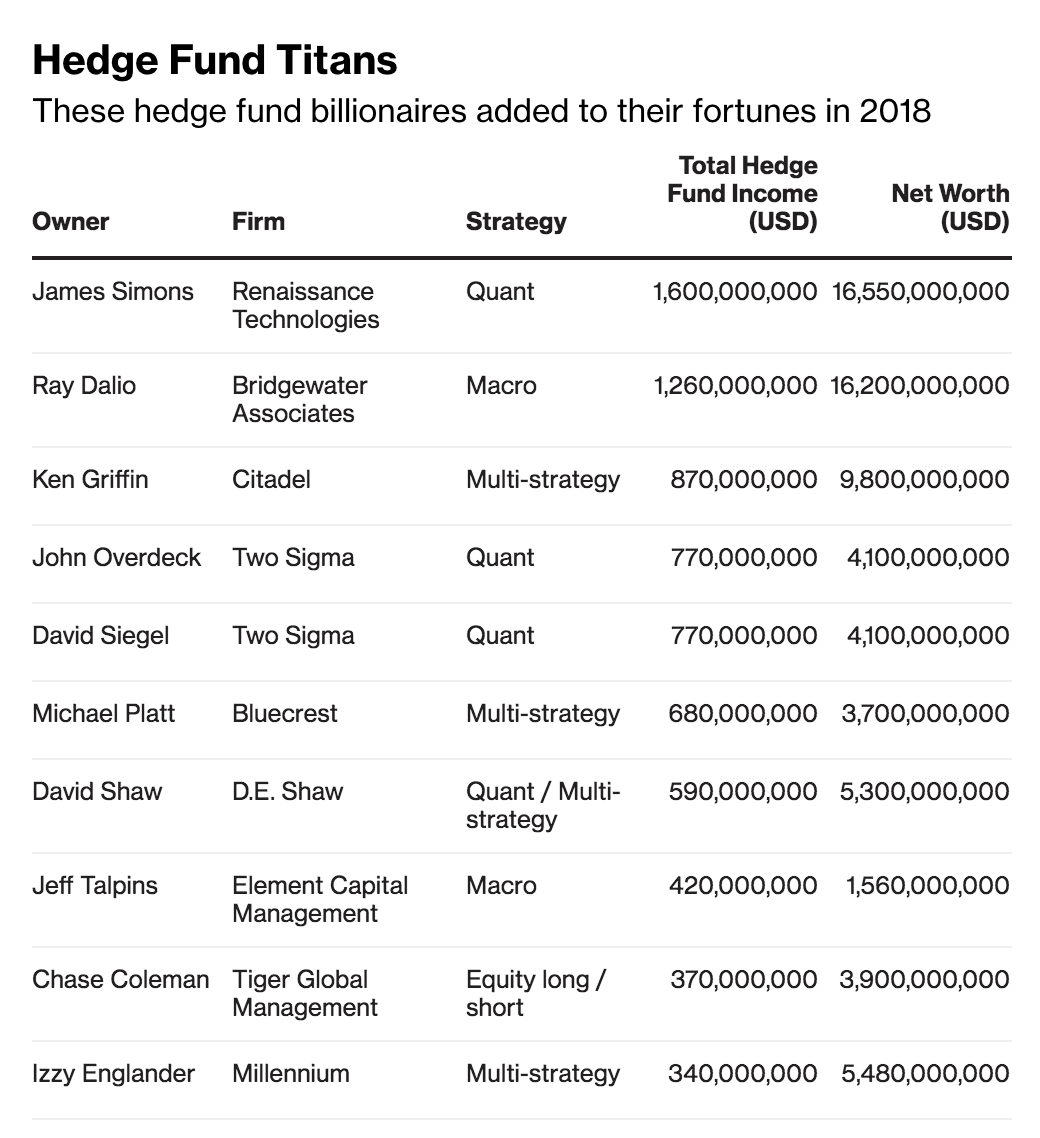


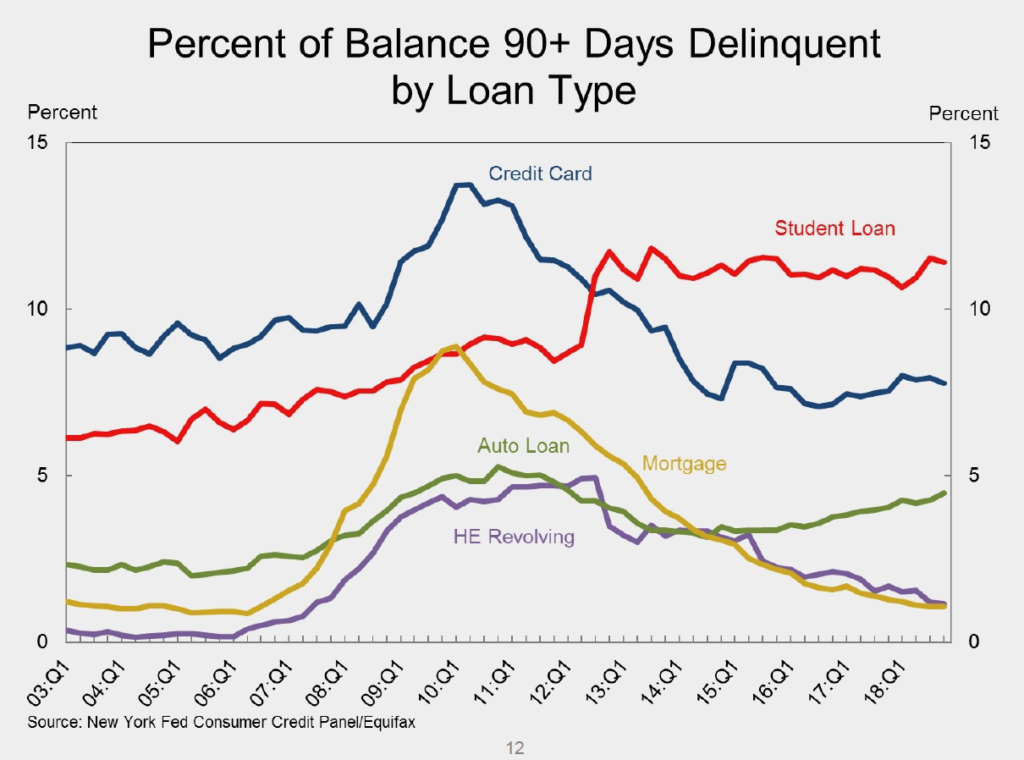

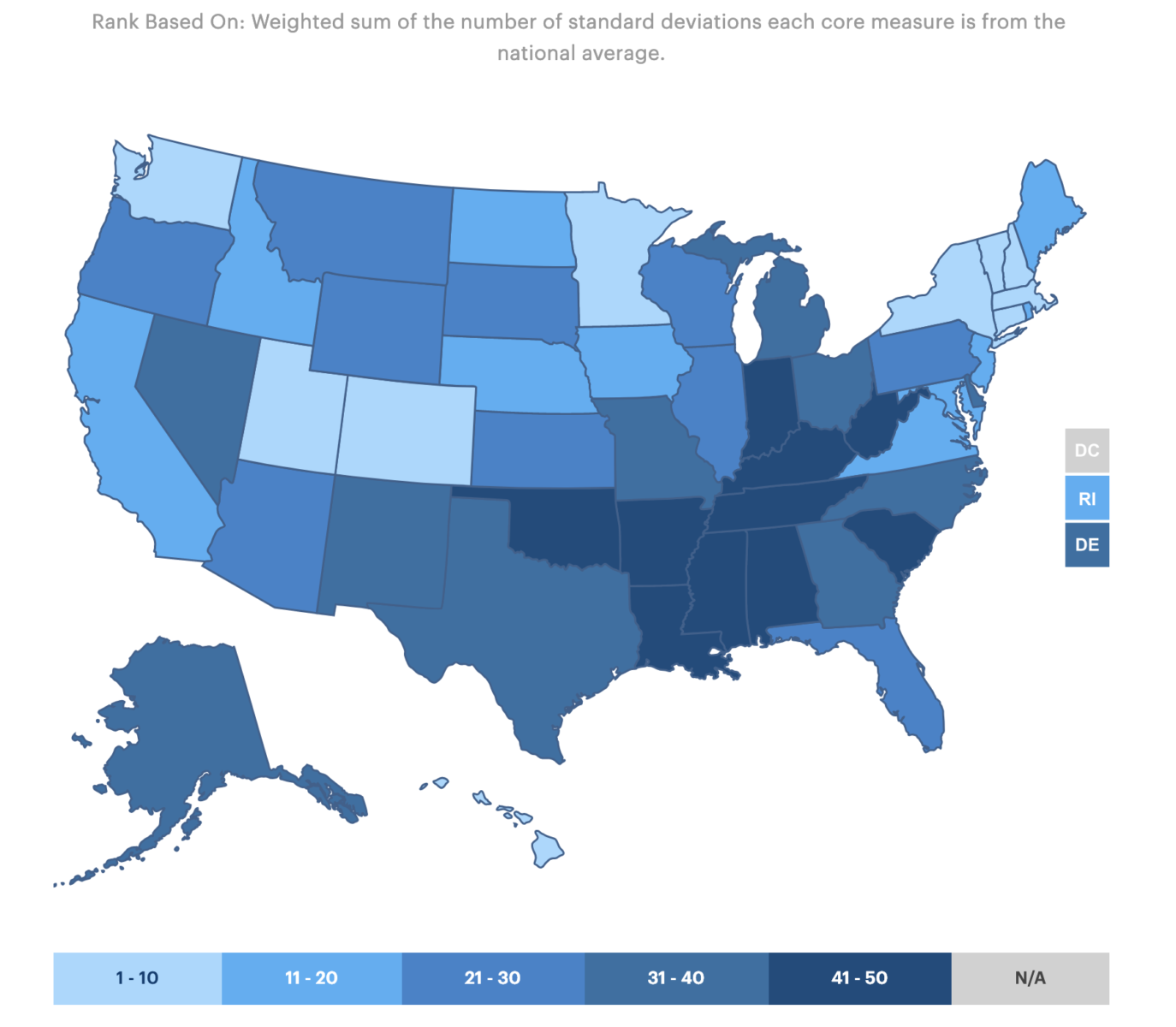
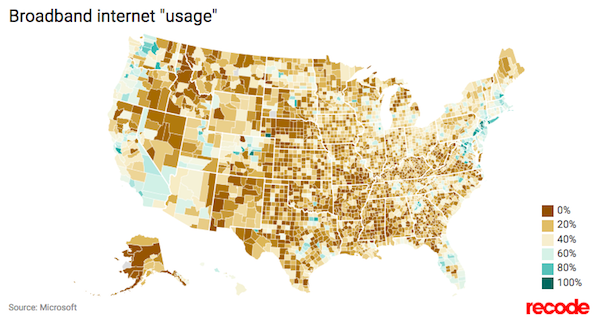


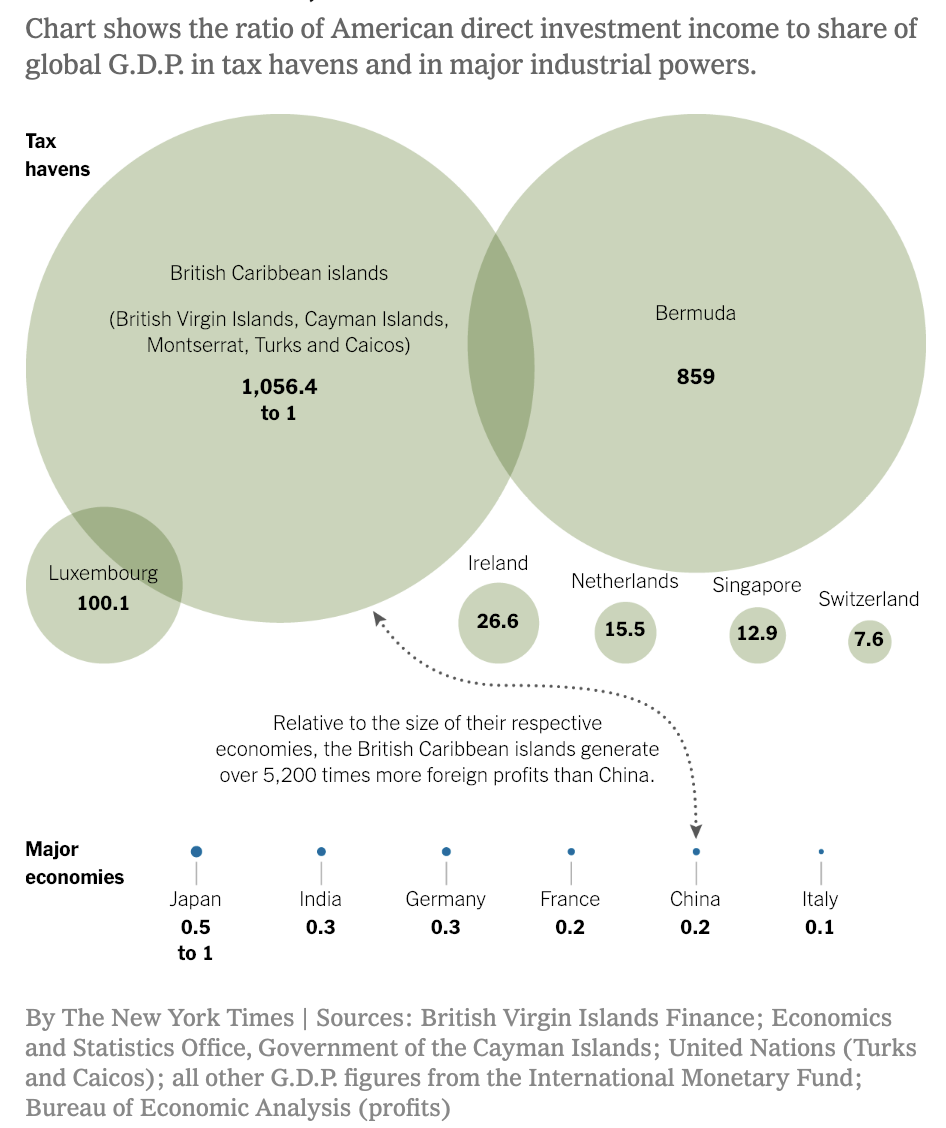









No comments:
Post a Comment